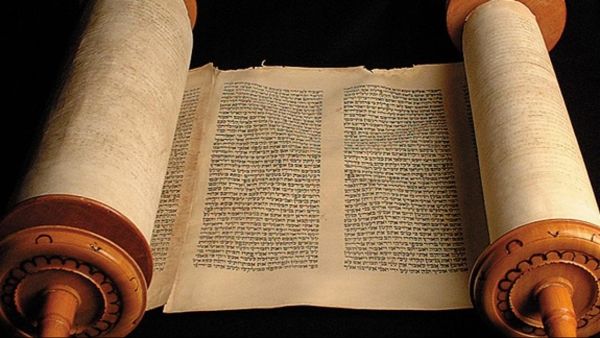A Whirlwind Tour Through the Old Testament

Scholars frequently discuss a concept known as the canon of Scripture.
This is based on the Greek word kanôn, which means a rule or measuring rod. It came to mean an authoritative standard, and so the canon of Scripture is the collection of writings that are divinely authoritative.
The Pentateuch was the first authoritative collection of books. These books tell how the people of Israel came to be, as well as God’s law for Israel, so they became the core books of Scripture for his people, and thus the first part of the biblical canon.
The importance of these books is indicated by their name in Hebrew. They are called the Torah—a word meaning “instruction.” They contain the fundamental instructions God gave Israel. Later, when the Old Testament was translated into Greek, they became known as the Law (Greek, nomos) which is why they’re referred to as the Law of Moses.
They became an authoritative collection early. This is shown by the fact that the Samaritans have their own Pentateuch.
The Samaritans are descended from the ten northern tribes of Israel. They seceded and formed their own nation around 930 B.C., resulting in the northern kingdom of Israel and the southern kingdom of Judah. They were conquered by the Assyrians around 723 B.C., and many were deported, but there is still a community of Samaritans in Israel. They worship Yahweh, the God of Israel, though they do so on Mt. Gerizim, in their own territory, rather than in Jerusalem.
They have a version of the Torah—known as the Samaritan Pentateuch—that includes the same books as the Jewish one and differs only in minor details. This indicates that it has an early date and was considered authoritative—canonical—from early times. It’s also significant because the Samaritans accept as canonical only the five books of Moses. They don’t accept the other books of the Old Testament, which suggests that the Pentateuch was the first group to be canonized, and the canon gradually expanded after this time.
New Books of Scripture Composed
The ten centuries leading up to the time of Christ were an active period. It was when the Old Testament took shape.
The Pentateuch ends with the death of Moses, and the story of what happened next is continued in a series of historical books. The first—Joshua—tells of the conquest of the promised land. The book of Judges then records how God repeatedly delivered his people from oppression through a series of divinely chosen military leaders. Ruth focuses on the life of a woman who was an ancestor of Israel’s most famous king, David.
Israel’s history continues in 1 and 2 Samuel, 1 and 2 Kings, and 1 and 2 Chronicles. Each of these was originally a single book, but they are divided in two in modern Bibles.
The books of Samuel tell the story of the last of Israel’s judges, how the monarchy was established under King Saul, and how it was passed to King David.
The books of Kings cover the final stage of David’s life and how Solomon succeeded him. Following Solomon’s time, the nation split in two, with the ten northern tribes seceding and forming the kingdom of Israel, leaving the southern tribes as the kingdom of Judah. The story of these two kingdoms is then related, until Israel is conquered and deported by the Assyrian empire around 723 B.C. and Judah is conquered and deported by the Babylonian empire around 587 B.C., beginning the Babylonian Exile.
The books of Chronicles cover the same period as the books of Samuel and Kings, but they focus on the southern kingdom and provide a supplemental theological perspective on the events.
Ezra and Nehemiah—which were originally one book—cover events after the Babylonian Exile and deal with the people’s return to the land of Judah and the rebuilding of the temple.
Esther also deals with the Babylonian Exile, and it is often grouped with the historical books. However, according to Pope St. John Paul II, this book has “the character of allegorical and moral narrative rather than history properly so called” (General Audience, May 8, 1985).
God also began to inspire what are known as wisdom books. They are devoted to philosophical reflection and the worship of God. The book of Job is a meditation on human suffering, while Ecclesiastes is devoted to the quest for meaning in life. The Song of Solomon celebrates the love of man and woman, and Proverbs offers practical advice for daily living. By far the longest wisdom book is Psalms, which is a collection of hymns.
The final type of book God inspired in the Old Testament period is prophetic. Several of these books are significantly longer than the others, so they are known as the major prophets. They consist of Isaiah, Jeremiah (together with the short book of Lamentations), Ezekiel, and Daniel. These prophets all related to the Babylonian Exile in one way or another.
By contrast, the minor prophets are generally shorter. There are twelve such books, and they were originally collected in a single volume called the Twelve. However, in Christian Bibles they are listed separately. The minor prophets lived between the 800s and 400s B.C., meaning they covered the period both before and after the Babylonian Exile.
If you want to find out more, order your copy of The Bible is a Catholic Book today!
Recent Posts
-
God Creates Out of Love
God creates, we believe, ex caritate—out of love. If we recall our image of Christianity as a refle …Dec 16th 2025 -
If We Just Love Jesus, Does It Really Matter Which Church We Go To?
When I was considering joining the Catholic Church, I sat down with some of my non-Catholic friends …Dec 12th 2025 -
How Can I Prepare Myself to Receive Holy Communion at Mass More Fruitfully?
Preparation for the celebration of the holy Mass and reception of Holy Communion is an essential el …Dec 8th 2025









